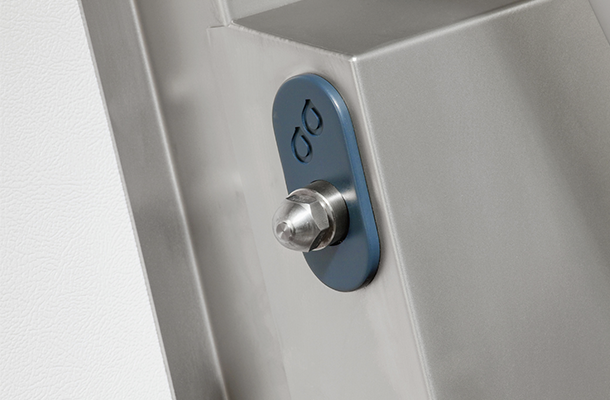Humidity in incubation
Tags: Incubation | Whitepaper
, November 25 2015

When two environments of differing humidity levels are separated by a porous layer, humidity will migrate to the drier environment. This is exactly what happens during incubation. The watery content of the eggs has greater humidity, which dries gradually. A fresh egg will never absorb water from the air.
During incubation, eggs lose water. The empty space is filled with air, which reduces average egg weight and can easily be monitored and measured. Optimum egg weight loss at transfer differs depending on flock age, which affects shell quality and egg size. In eggs from older flocks, we expect 13% weight loss and for younger flocks, 11%.
In both cases, the air cell should occupy about 1/3 of the egg at transfer, with the lower tip reaching the middle of the egg. If the air cell is too small, air deposit is limited and the embryo will suffocate before hatching. If the air cell is too large, the egg contents and the embryo will be dehydrated. Both cases produce increased late embryo mortality.
It is not only the final size of the air cell that matters, but also the time it takes to form. In the first ten days of incubation, the embryo is small and floats in the amniotic fluid. Weight loss during this phase is mainly the effect of water evaporating from albumen and internal liquids. After this stage, changes occur quickly: the growing embryo gradually fills the egg, excepting the air cell. Low RH set points at days 14-18 of incubation increase evaporation from the allantois – and once the allantois is emptied of fluid, moisture will be drawn from the embryo, causing its dehydration.
In designing an incubation program, we need to consider both optimum final weight loss and the way it is obtained. A program can either be based on a constant RH set point, when the eggs should lose about 0.67% weight daily over the entire incubation program, or alternatively, by using variable RH set points.
Optimum constant RH set point can differ depending on eggshell quality and usually varies between 50-55%. When using a variable step-down RH profile, slow initial weight loss in the first ten days of incubation must be compensated by faster weight loss in the final days. However using this principle does have certain limits and applying an RH set point lower than 45-48% increases the risk of dehydrated embryos.
The main reason for using a step-down RH program is to create a more uniform environment in the setter, where humidifiers do not need to work even when opening ventilation.
Advice
- Test at least six setter trays to check relative weight loss for each new batch of eggs. Varied shell quality may require modifying the incubation program.
- Analyze the height of piping in hatch leftovers. High piping indicates insufficient weight loss.
- Select a profile for RH that allows optimum weight loss with the lowest possible humidification.
- Don’t allow embryos to dehydrate in the last days of incubation. Ensure that set point is not lower than 45% from day 16.
- Calculate average RH for step-down programs, ensuring that overall the average RH is at least 50%.